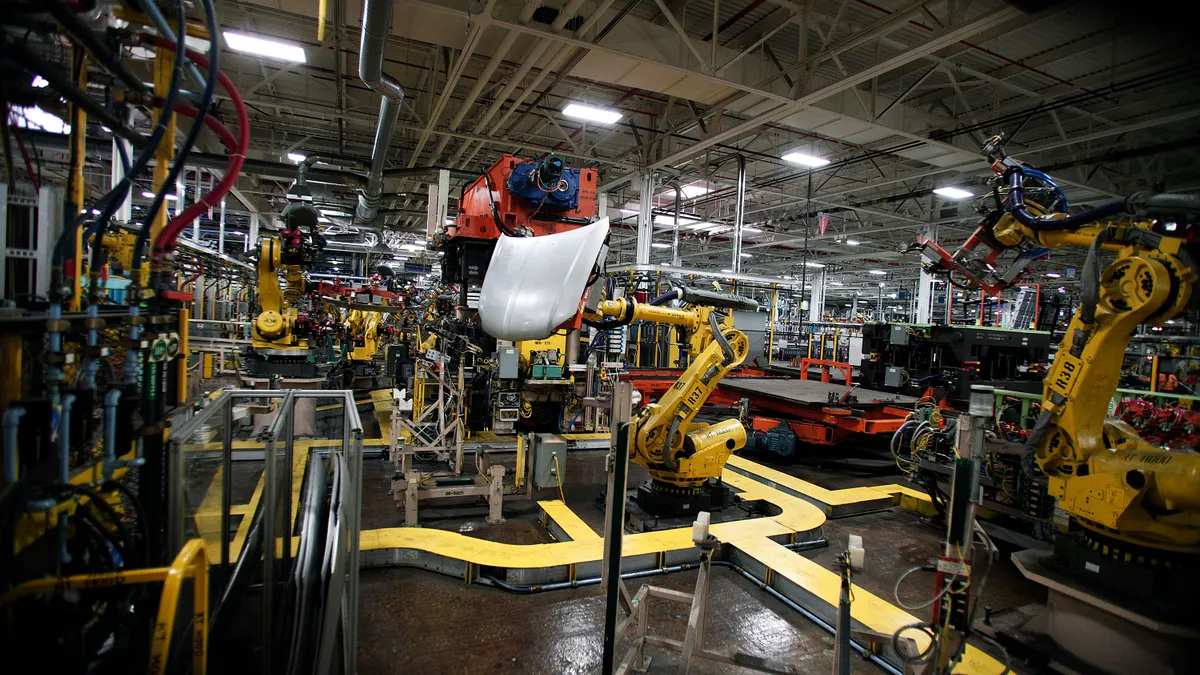Experts warn that supply of a key component in electric vehicles is hurtling towards a tipping point when global demand will outstrip supply — a moment that could come as early as this year.
Graphite is one of the primary components that make up the anodes in a lithium-ion battery, yet the state of its supply has gone largely unnoticed for years, even as demand for battery-grade minerals continues to rise with electric vehicle sales reaching record levels.
"Graphite has kind of been the poor cousin of the battery minerals and doesn't get the attention of the other commodities," said Gregory Bowes, executive chairman of the Northern Graphite Corp. "But we're getting very close to an inflection point where demand overtakes supply, and this is going to be first-page news."
Supply of the key EV-battery mineral is headed for a deficit of just over 20,000 tons this year, a shortfall that will only balloon throughout the next decade, according to Benchmark Mineral Intelligence estimates.
Graphite mines are located in only a few places around the globe, making global manufacturers reliant on limited procurement sources and vulnerable to supply shocks. Last year, China produced 79% of the world's graphite supply, according to the USGS, compared to just 1.2% in North America — none of which came from the U.S.
And China is home to not only the majority of the world's graphite mines, but also the downstream processing that's necessary to make the material usable in batteries.
"The supply is getting tighter and tighter, and the downstream demand for graphite is accelerating really, really rapidly," said Daisy Jennings-Gray, senior price analyst at Benchmark.
Since September 2021, prices of the high-grade graphite most commonly used in lithium-ion batteries have risen from $530 per ton to $825 per ton in June 2022, according to Benchmark. The group expects that number to top $1,000 per ton in 2025 and to remain at "a high level" through 2030.
Higher costs and tight supply have more companies looking to secure supply by diversifying their sourcing or investing in production themselves.
Last year, Tesla announced a deal with Australian graphite mine operator Syrah Resources to buy the mineral from one of Syrah's sites in Mozambique, part of the automaker's strategy to reduce its supply reliance on China. And Northern Graphite, which currently operates a mine in Quebec, plans to open a second mine in Bissett Creek in southern Canada to up its own graphite production as demand continues to grow.
On the U.S. side, the Biden administration has deemed graphite a "critical mineral," prioritizing it and other battery-grade materials, including lithium and cobalt, for investment. In February, the administration announced nearly $3 billion in funding to bolster supply chains for advanced batteries.
Alabama has emerged as home to what will become the U.S.' first graphite processing plant. Westwater Resources and its subsidiary, Alabama Graphite Products, broke ground on the site in April with plans to be operational by the second quarter of 2023, according to local reports.
Westwater President and CEO Chris Jones noted last year that initially, the raw graphite processed in the plant will be imported, but "none of it will be from China.” The company also expects to open a new mining operation in the area by 2028.
While the move toward a more diversified supplier and processing base is positive, Bowes stressed that solving the problem is not a quick fix, and it’s one that will take billions of dollars to tackle.
"The crux [of the problem] is we need a lot more supply, and construction has not started yet," he said. "So there's going to be a very serious point here where the automakers and battery makers look around and there's not enough graphite, and it can take a few years, minimum, to build a mine."
















